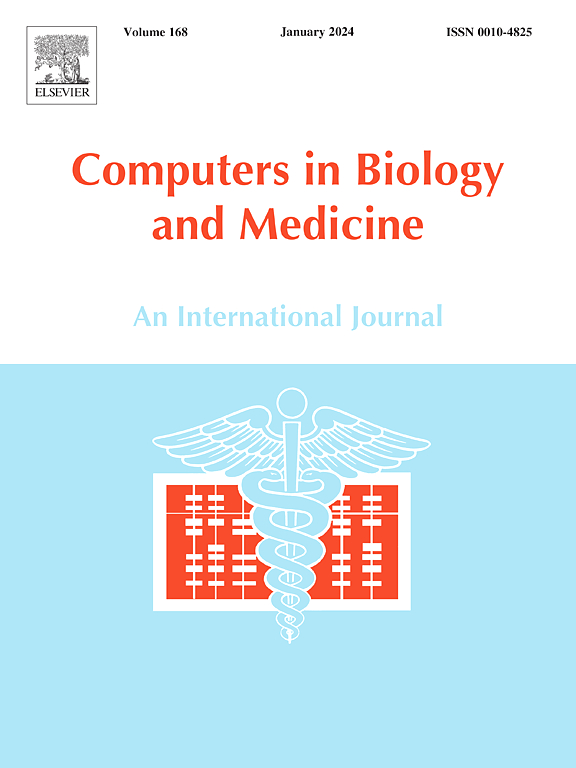Multimodal brain-body analysis of prefrontal cortex activity and postural sway with sensory manipulation
IF 7
2区 医学
Q1 BIOLOGY
引用次数: 0
Abstract
The involvement of different brain areas in postural balance control under various sensory inputs remains unknown. This study aims to investigate the effects of different sensory manipulations on prefrontal cortex (PFC) activity and postural sway as well as the associations between PFC activity and postural sway in different sensory conditions. To this end, younger participants underwent eight standing tests with single (visual, vestibular, and somatosensory) and double sensory manipulations. Functional near-infrared spectroscopy was employed to capture their cortical activation in the dorsolateral (DL), ventrolateral (VL), and dorsomedial (DM) PFC. An inertial measurement unit was also used to assess their postural sway. Results showed greater DMPFC and DLPFC activation with vestibular, somatosensory, and double sensory manipulations, and increased DMPFC activation with visual manipulation. These results indicate that the DMPFC and DLPFC are more involved in sensory integration during standing. Postural sway measures increased in response to double and some single sensory manipulations, implying greater regulatory activity and reduced postural stability and sway smoothness. Some meaningful correlations were also found between PFC activity and postural sway measures. Increased DMPFC activation during somatosensory and vestibular manipulation was correlated with better postural stability, highlighting its role in these sensory conditions. A negative correlation was found between DMPFC activity and postural sway in the anteroposterior direction, but not the mediolateral, indicating that DMPFC activity modulation depends on sway direction. The findings of this study lead to a better understanding of the functional architecture of the PFC and are useful for designing better clinical assessments, rehabilitation programs, and assistive devices.
前额叶皮层活动和体位摇摆的多模态脑-体分析
在不同的感觉输入下,不同的脑区参与姿势平衡控制仍然是未知的。本研究旨在探讨不同感觉操作对前额叶皮层(PFC)活动和体位摇摆的影响,以及不同感觉条件下PFC活动与体位摇摆的关系。为此,年轻的参与者接受了八次单感官(视觉、前庭和体感)和双感官操作的站立测试。使用功能性近红外光谱捕捉他们背外侧(DL)、腹侧(VL)和背内侧(DM) pfc的皮质激活情况,并使用惯性测量单元评估他们的姿势摇摆。结果显示,前庭、体觉和双觉操作增加了DMPFC和DLPFC的激活,视觉操作增加了DMPFC的激活。这些结果表明,DMPFC和DLPFC在站立时更多地参与感觉统合。姿势摇摆测量增加响应双和一些单感觉操作,这意味着更大的调节活动和降低姿势稳定性和摇摆平稳性。在PFC活动和姿势摇摆测量之间也发现了一些有意义的相关性。在体感和前庭操作过程中,DMPFC激活的增加与更好的姿势稳定性相关,突出了它在这些感觉条件中的作用。DMPFC活动与体位摇摆在正反方向呈负相关,而在中外侧没有,这表明DMPFC活动的调节依赖于摇摆方向。本研究的发现有助于更好地理解PFC的功能结构,并有助于设计更好的临床评估、康复计划和辅助装置。
本文章由计算机程序翻译,如有差异,请以英文原文为准。
求助全文
约1分钟内获得全文
求助全文
来源期刊

Computers in biology and medicine
工程技术-工程:生物医学
CiteScore
11.70
自引率
10.40%
发文量
1086
审稿时长
74 days
期刊介绍:
Computers in Biology and Medicine is an international forum for sharing groundbreaking advancements in the use of computers in bioscience and medicine. This journal serves as a medium for communicating essential research, instruction, ideas, and information regarding the rapidly evolving field of computer applications in these domains. By encouraging the exchange of knowledge, we aim to facilitate progress and innovation in the utilization of computers in biology and medicine.
 求助内容:
求助内容: 应助结果提醒方式:
应助结果提醒方式:


